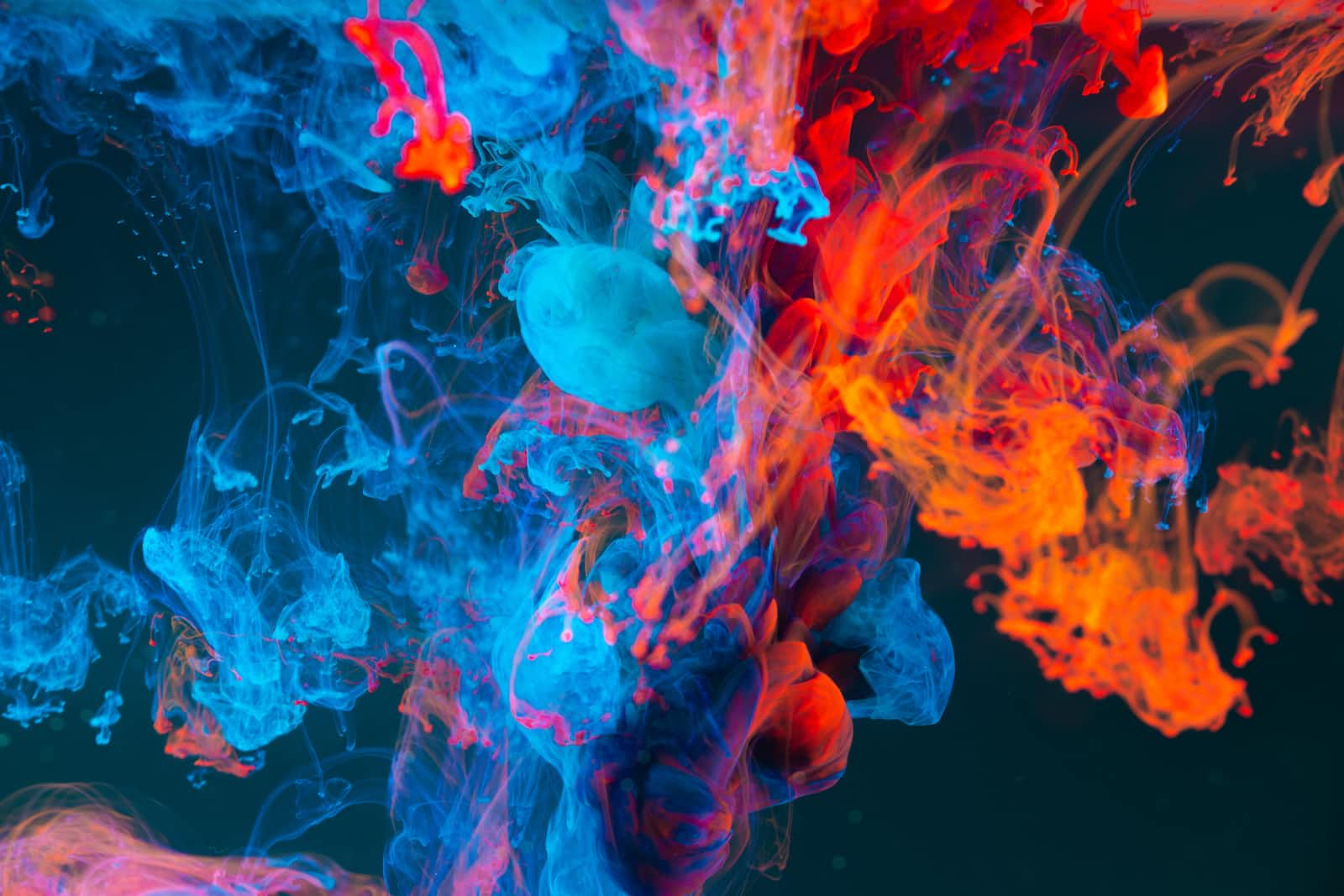The search for new Aesthetics in the 21st century
 Harish Pillai
Harish Pillai
The gist of this article was how I felt that new technological emergence/hardware, in this case, Quantum computers and how that might influence new kinds of capabilities in design, art aesthetics and general informatics.
Introduction
The Age of Aquarius is upon us. What will the new age bring in the accomplishment of new technological achievements and innovations? Optimism is like Moore’s Law and hope is the Principle of Emergence. An idea never dies, it has the pluripotency and refractive potentiality of a prism by minds and settings across the age. The idea is the search for new and eternal, value and ambition, progression and elevation, interpretations and processes.
A prism is an object, which can be made with new materials, processes, tools, techniques, and styles. The light is the idea, eternal and rich to impart new values in flux climates. What is the pursuit of aesthetics in the 21st century when computers are tools of the trade in the world today? The industrial revolution produced goods in a factory setting, with uniformity and in mass. The products were received as crude by the public.
The expense of human ingenuity, craft and quality of goods provoked the question of aesthetics and design. On a collective level, the presence of this new technological achievement was a clear indication that the modern age had begun, with expectations and promises of a new way to live life. Critics would cite that machines had no doubt bridged the gap of convenience and efficiency of production, however at what cost?
The industrial revolution brought with it the search or invigoration of design and aesthetics as an ideological value to be examined in the progressive discourse of human thought and production. The art and craft movement was more than well-designed furniture produced by human ingenuity and craft, it was a reassertion of values that were integral to the expansion of modernity. The role of technology influenced the question and application of aesthetics in human activity.
Computer, hardware, transistors
Ideological movements are a unique birth print from characteristic periods in history to fulfill needs that have gone unmet, be it economical, sociological, intellectual, cultural, or artistic. They are quiet revolutions hosted in the mind of the individual. Progression is an essential component in life’s design, a body in constant regulation of new blood cells and proteins from countless biological contexts.
The industrial revolution was integral to the birth of the modern world. From books, I've read it’s been suggested that design began here, I would put forward that design was the unspoken word in the creation of artifacts present since times of antiquity. The Bauhaus school was the conception of a directed vernacular to design with purpose and aesthetics. Design values are products of the modern mind and hint of the future.
If we look at the world and human progress as incremental and gradual, we would be able to observe that every technological and cultural achievement is a ripple in a pond spreading outwardly, it affects all things. The law of cause and effect is central to comprehending the principle of Emergence. Every ripple in an ecology of a system is driven by change agents in the form of products, commercial viability, and inventions. Disciplines, electronics, or ideological movements.
The advent of transistors being packed in a dense integrated circuit board fueled the ease and rise of personal computers, mobile phones, and software. Silicon Valley and start-ups established user experience design as an essential component in computation commerce. The projected future entails new microchips modeled after the human brain and quantum computing. Information processing offers new means of curation in functionalities of personal computers.
Digital signals in current personal computers convert information input through a mechanism of binary states. Quantum computing utilizes a parallel combination of digital signals that can be combined and superimposed in real-time. The transcription of information magnified in speed and volume will alter processing capabilities and potential amplification in use cases of personal computers in the computation field.
Concurrently, the software will experience a shift in its conception of functionality and design possibilities in its ecology. The invention of the RAM contributed to the computation field of the personal computer, although we may have failed to notice the degree of its contribution. What are the possibilities of aesthetics in the future of personal computing, and how will new hardware influence our vision of new aesthetics?
Influence
Art movements in general through history have come and gone. Each brought with it an ideology for the artist and craftsman, some were influential as a total ideology to impact literature and film. Graphic design, art practices, music, architecture and aesthetics. A new lens of perception to take from reality with minimum investment from the side of the artist, to simply have wanted to shatter an ideological outlook that had been worn, for the restless artist is the working artist.
In no chronological order, I will present these movements as an introduction to the purpose of this article. Naturalism, Impressionism, Expressionism, Dadaism, Surrealism, Futurism, Cubism, Constructivism, Art Nouveau, Pop Art, Minimalism. These movements have made their contribution to the design world quietly, controlled and filtered by shifting design values. The relevance of the art and artist instilled in the advancement of human thought is in the long game.
The purveyors of Futurism were, as the name suggests, obsessed with the mechanical, speed, and towers of the height of the future. They wanted acceleration, full speed ahead to modernity. J.G Ballard’s Crash would have fit right at home as erotic literature. The movement was a form of nationalism to bring forth industrialization, economic reforms and progression with lightning speed. A hunger for a new future greater than living in 1909.
The impressionists were situated cognitivist who desired to capture the truest moment in a moving impermanent world that was ever-changing, a true perception that would last after the flux. Dadaist, similar in spirit to punk musicians, used their expression as a form of protest through the cheapest means--subversion. Punk musicians weighed down by economic uncertainties and affordance, rich in defiance of the working class to secure the good life, struck down classical and progressive music harmonic structure in favor of 3 chords win for 2 a minute song.
Surrealism from the trenches of Sigmund Freud’s significant influence in the world of human psychology and Carl Jung’s archetypes converged its reach to implore the artist to plunge the depths of the human mind in search of the unnameable after all the greatest adventure into the unknown is the search for a place that is never reached by conventional means, a vista of mystery living beyond a confinement of a period in history in the human mind.
We need a new ideology for the 21st century. A kind of idea that will unite present and future expectations of where technology is going. A revamp of old and new values through the web of systems, the intersection of technology, new optimism through processing capabilities, and a buzz of new commerce and economy. We need a new, radical design.
The role of an Artist
The artist is a transformer of what is presented to the mind’s eye. Ancient Indians believed the artist was a gateway for the invisible world to speak through the visible world, presenting insight and experiences encapsulated in art. In certain cultures, art was mediation or a tool in rituals to converse with forces beyond a religious experience. Prehistoric times allowed primitive humans to distinguish tribes apart and preserve an autobio of their lives through hieroglyphics or pictographs.
The artist in ancient civilizations recorded human activity, using art as a means to capture and integrate the collective mind of society and civilization. An artist creates as a means to explore the psyche or challenge boundaries to grasp new areas for advancement and exploration. An artist motivated by ideals in the pursuit of aesthetics explores forms, while others to portray reality or specific historical periods steer towards realism to communicate the authenticity of a situated experience.
The restless shape new realities with new values. No more can this be true for the Beat Generation. A literary movement that on the surface would be credited for liberalizing publication in America. An artist lives in a world, inside or outside, distinguishable only by their thoughts. A philosopher and artist can converse in subjectivity, as both are besieged by mystic wanderings in search of the essential nature of existence relevant to each. Where they diverge, one is dominated by reason, logic and consistency while the other lives in flux in search of new perception.
New perceptions are vital in the evaluation of our cognitive journeys. Subjectivity is to no surprise an ally of the artist, a means of perceiving the inner world and stimulation before a piece of work is brought to the tangible world.
Phenomenology, the multiplicity of the perceived world, is very much the sense organ of the artist. The artist of the 21st century is no different from the artist of before, technology empowers the artist to create in new ways and the search for new aesthetics is still a relevant question. As bohemians and visionaries wander the streets of mind and thought for a new vision, the artist remains the transformer.
Subscribe to my newsletter
Read articles from Harish Pillai directly inside your inbox. Subscribe to the newsletter, and don't miss out.
Written by

Harish Pillai
Harish Pillai
I am a design person among other things. Design has played an important role in my life, so much so that it has become a part of my identity. This is my first blog. This blog is a means of understanding the landscape of technology, the individual, software and observations. That would be a general description, do stick around to see it develop.